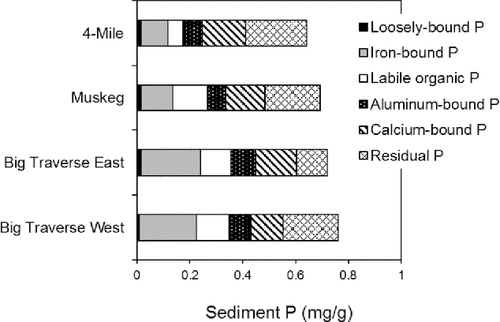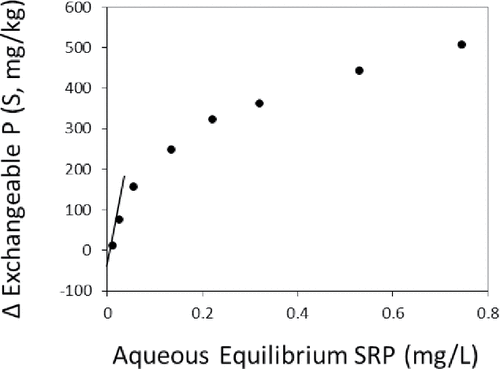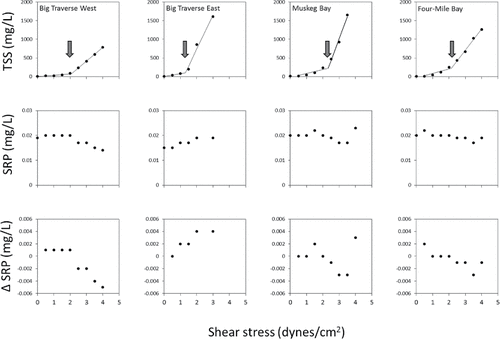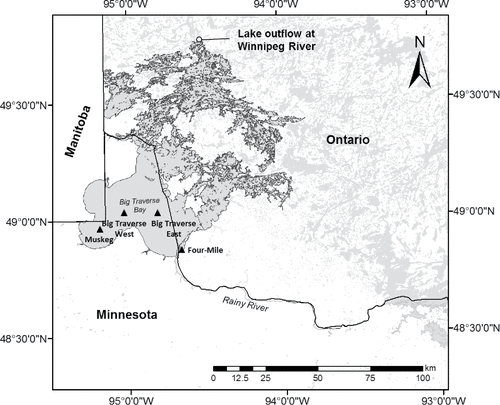Figures & data
Table 1. Morphometric and summer trophic state characteristics of the 3 southern bays in the Lake of the Woods.
Table 2. Sediment physical and chemical characteristics of the upper 10-cm sediment layer at various stations in the Lake of the Woods.
Figure 2. The composition of biologically labile (i.e., subject to recycling and biological uptake; loosely bound, Fe-bound, labile organic P) and biologically refractory P (i.e., more inert to recycling and uptake and subject to burial; aluminum-bound, calcium-bound, refractory organic P) fractions in the upper 10 cm sediment layer for various stations in the Lake of the Woods system.

Figure 3. Mean (1 standard error, n = 3) rates of diffusive P flux from intact sediment cores under anaerobic and aerobic conditions for various stations in the Lake of the Woods.

Table 3. A comparison of rates of aerobic and anaerobic rates of phosphorus (P) release from large, shallow polymictic systems in Canada and northern USA determined from laboratory incubations.
Figure 4. An example of changes in the sediment exchangeable P (S) concentration as a function of the final (i.e., after 24 h of exposure) equilibrium soluble reactive phosphorus (SRP) concentration for sediment collected at Big Traverse West in the Lake of the Woods. Regression analysis between S and equilibrium SRP near the point of no net change in S was used to estimate the equilibrium P concentration (EPC).

Table 4. Equilibrium phosphorus (P) characteristics, estimated P sorption capacity, and percent P saturation characteristics for surface sediment in the Lake of the Woods. EPC = equilibrium P concentration.
Figure 5. Changes in total suspended sediment (TSS, upper panels), soluble reactive phosphorus concentration (SRP, middle panels), and the net change in SRP from the initial concentration as a function of applied shear stress in the overlying water column. Arrows denote the estimated critical shear stress.

Table 5. Sediment critical shear stress of deposited sediment collected from various stations in the Lake of the Woods.
Table 6. Mean (1 standard error; n = 5 to 8) soluble reactive phosphorus (SRP) concentration and mean change in SRP during resuspension for various sediments. The mean initial SRP concentration (i.e., prior to sediment resuspension) was 0.019 mg/L). Plus and minus signs indicate a net increase (+) or decrease (−) in SRP versus the initial concentration.

